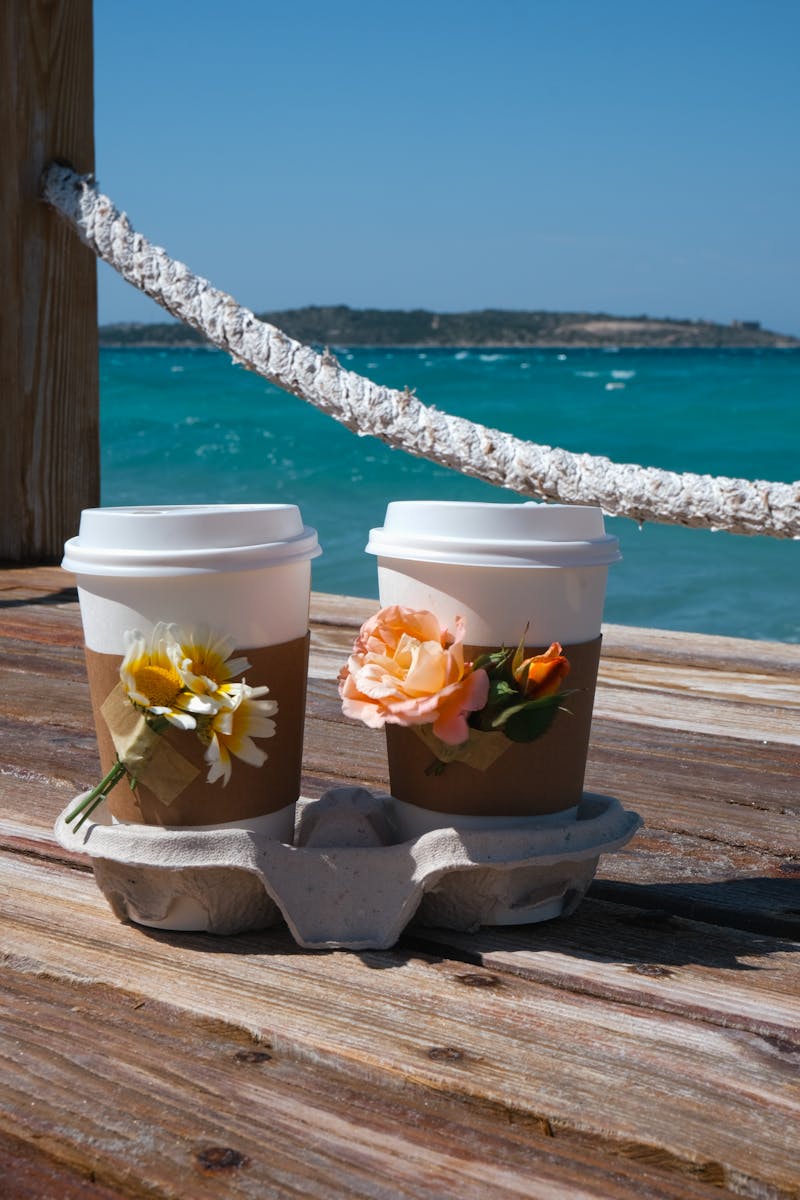Designed with a snug fit rim to keep drinks secure, paper coffee cups do more than just hold your latte or cappuccino. They showcase brands through prints and designs.
However, the lining of standard paper cups made with fossil-based plastic is problematic for recycling and composting. This makes it difficult to recycle waste coffee cups and can lead to microplastics leaching into soil, rivers, and oceans.
How They’re Made
The paper cups we use in coffee shops and fast-food restaurants are often made with a plastic coating. This layer is designed to be waterproof so that our drinks stay inside the cup. This is an important feature because it prevents us from spilling our drink on ourselves while holding it.
The plastic lining also helps the cup retain heat and resist leaks. This is a crucial aspect for OOH beverages like coffee and tea, which tend to be piping hot.
Once the cup has its plastic liner, it’s time to add the paper part. This is typically a heavier paper, sometimes even infused with a mix of wood chips, to provide extra strength and insulation.
Then, the flat paper goes into a machine to be formed into a cup shape. It’s at this point that the cup undergoes rigorous quality control checks based on AQL (Acceptable Quality Level) standards. Once the cups have passed quality control, they’re ready for shipping.
Materials
Creating a paper cup requires a careful balance of physics, engineering, and aesthetics. This multifaceted process begins with wood chips, which undergo a metamorphosis that transforms them into the paper-based products we see in coffee shops and other locations.
The wood is then chopped up and dissolved in a chemical solution that turns it into pulp. The pulp is then molded and dried to become the foundation of what will soon hold your morning cup of coffee.

Some paper cups also have a barrier coating, which helps to ensure your drink stays in the cup and doesn’t spill. This barrier layer is made of materials like kaolin and super-platy clays, as well as other additives such as mineral oil saturated hydrocarbons and mineral oil aromatic hydrocarbons. These additions help to create a physical barrier that resists water, oils, and grease. This barrier coating can be made from a variety of materials, including bioplastics and compostable polymers.
Convenience
In the US, cafes and coffee shops generate billions in sales every year. It is important for these businesses to maintain adequate supplies of paper cups with lids, stirrers, and other accessories to meet demand. By using paper cups, restaurants and cafes avoid the cost of buying expensive equipment such as ceramic mugs.
Consumer demands for environmentally friendly products have spurred a host of parallel efforts across the value chain to deliver alternatives to plastic-coated paper cups. These include streamlined collection, sorting, and recycling of single-use out-of-home (OOH) paper beverage containers, while also pursuing substitute barrier technologies that assist biodegradation and compostability.
For example, converter Beautiful Cups (The Netherlands) commercialized reCUP, with its EarthCoating barrier liner technology that uses 41 to 50% less fossil-based plastic resin than a PE-coated substrate, and is re-pulpable on existing coating equipment. The company is working on further developments with developmental acrylate water-based polymers that provide heat-sealing and blocking properties, as well as chemical resistance.
Recycling
Paper coffee cups are generally recyclable if they are lined with a paper-based material and not with a plastic liner. Whether or not your local recycling program accepts the recycled content of OOH paper cups will depend on its policies, facility capabilities, and infrastructure.
Traditional cups with PE liners are not compostable because the polymer resists microbial action in a composting system. As a result, most waste cups are sent to landfills or incinerated (OpenIDEO 2019).
Alternatives to fossil-based barrier materials for OOH paper cups are under development. One example is a technology from the paper cup converter Beautiful Cups, which uses an acrylate-based coating called EarthCoating that reduces the amount of plastic in the liner to 41 to 50% compared with 100% fossil-based polyethylene liners.
Some manufacturers are re-designing their disposable paper cups to make recycling easier. For instance, the Frugal Cup from UK paper cup manufacturer Frugalpac is made of composites that include an outer made from recycled paperboard and a food-grade PE inner liner that can be separated for separate recycling by general paper mills.




